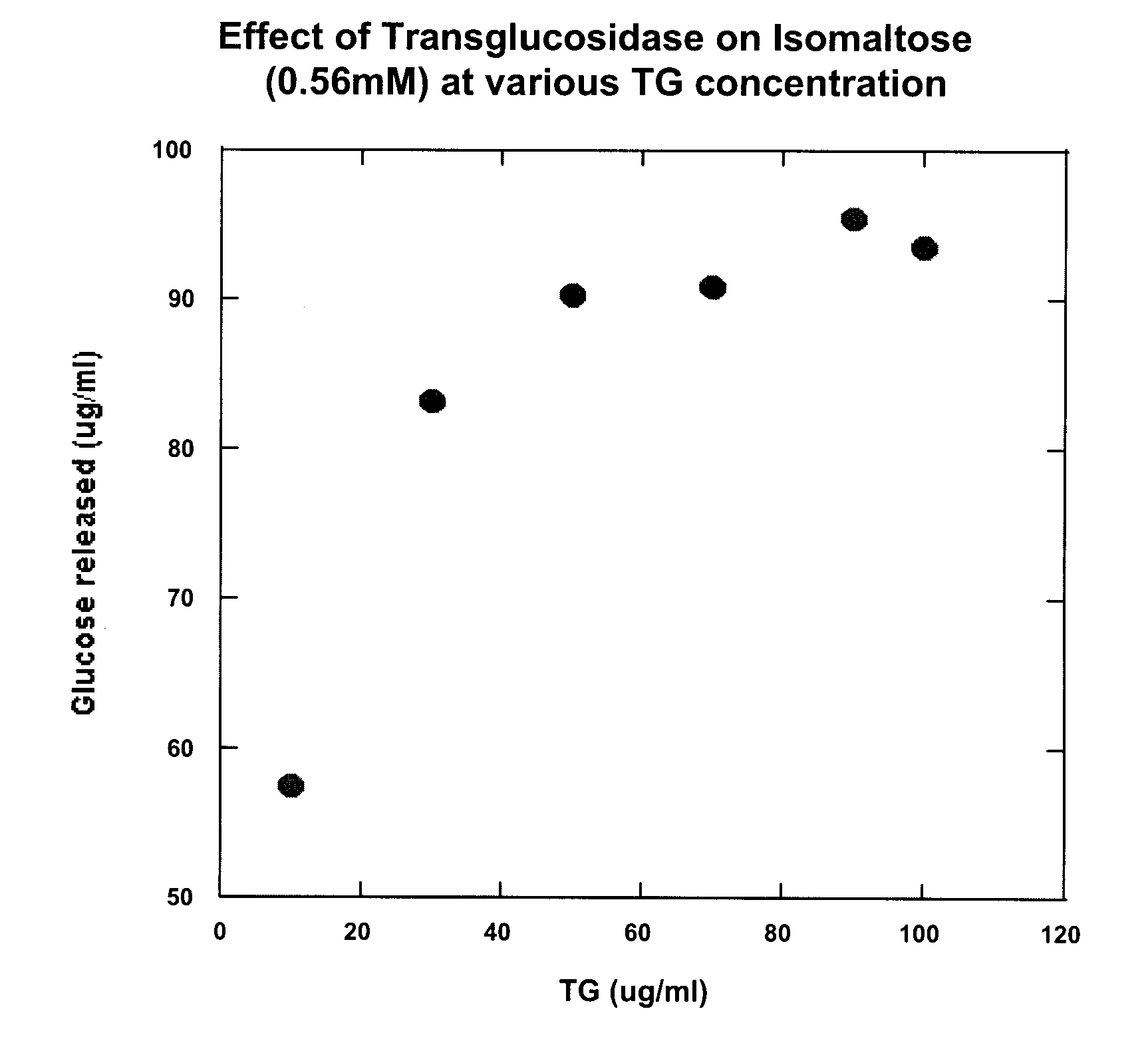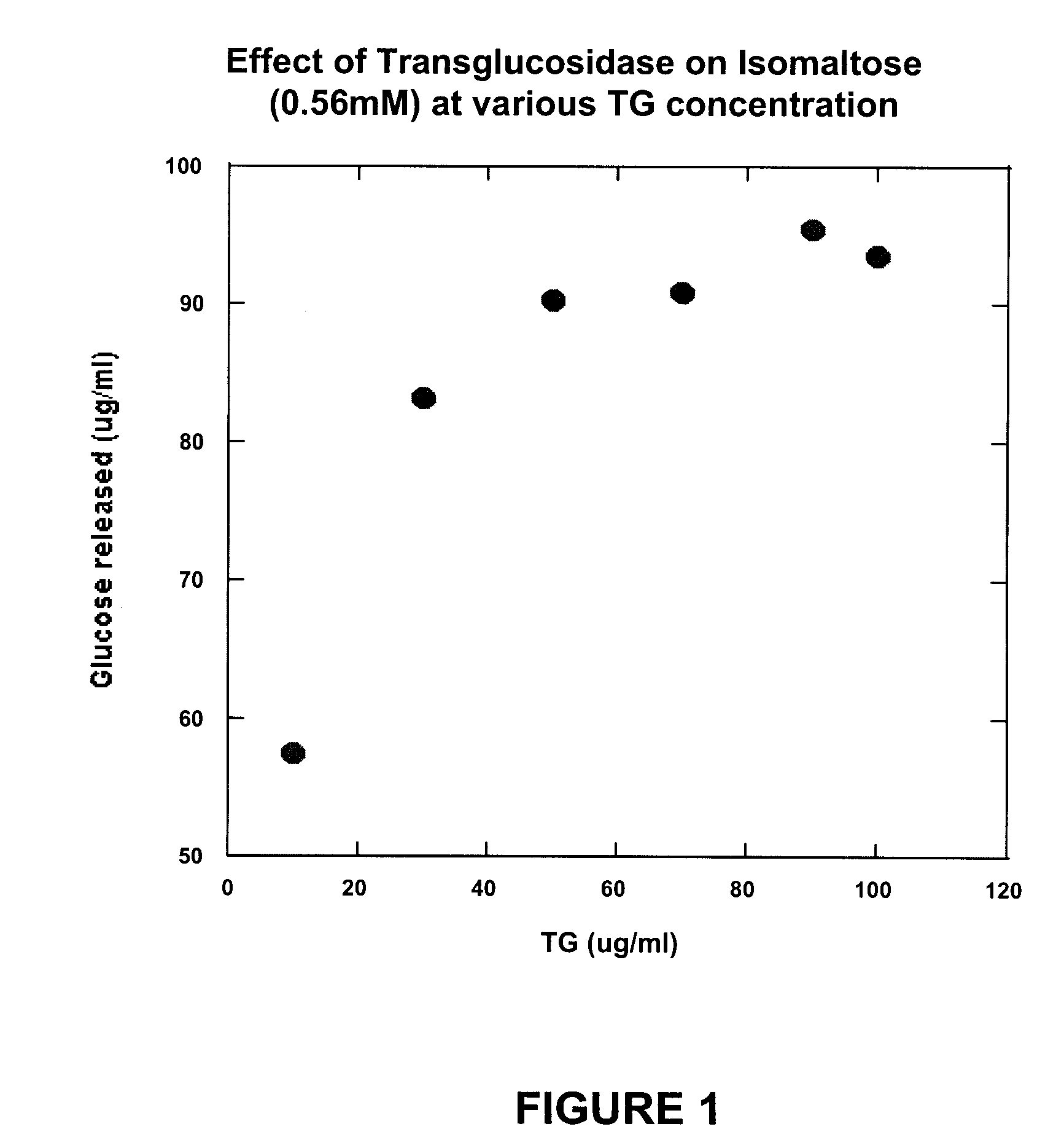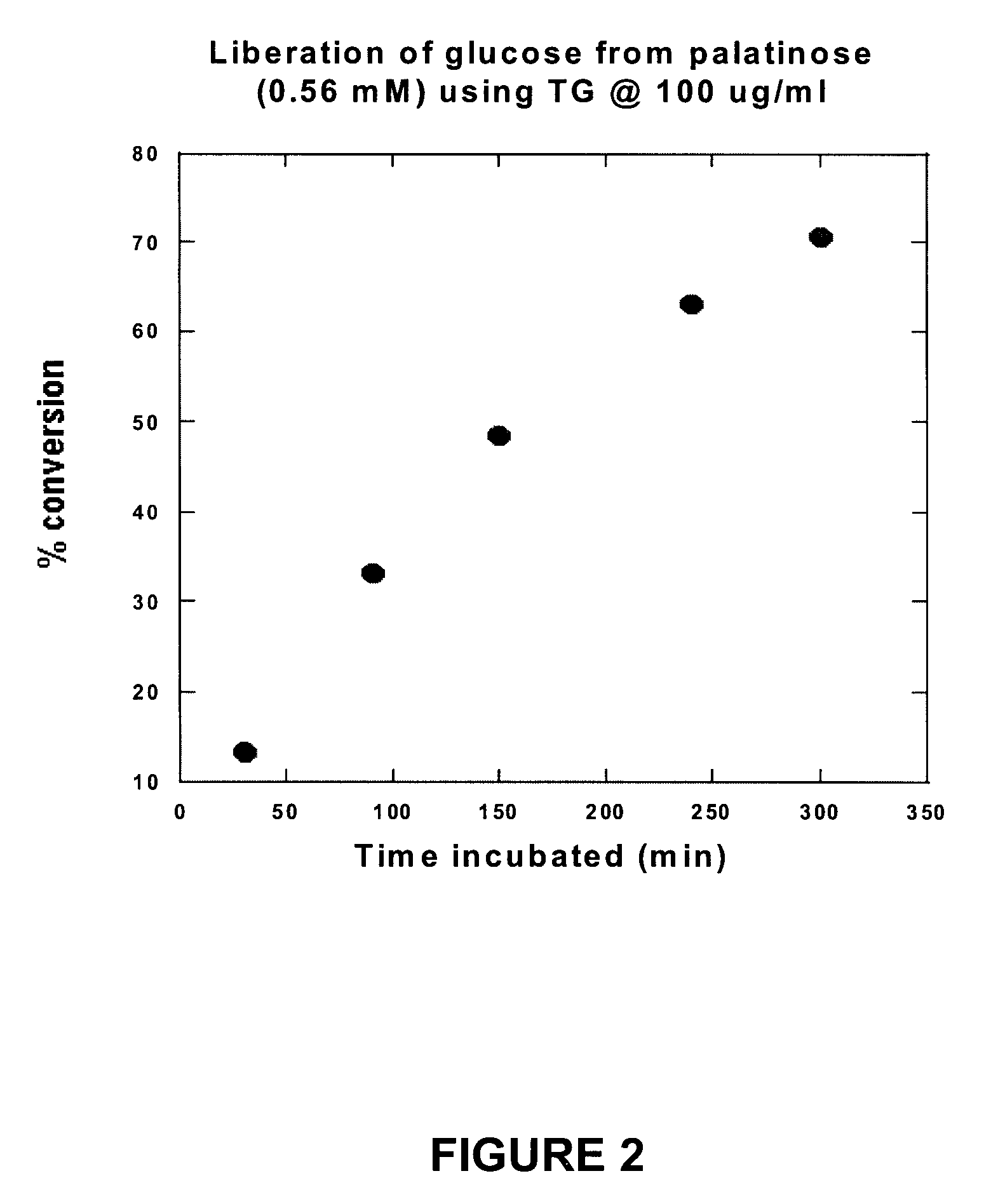Compositions and methods for the treatment of autism
a technology for compositions and autism, applied in the field of compositions and autism treatment, can solve the problems of severe impairment of the functioning of individuals, increased risk of seizure disorders, inflammation, autoimmune reactions,
- Summary
- Abstract
- Description
- Claims
- Application Information
AI Technical Summary
Benefits of technology
Problems solved by technology
Method used
Image
Examples
example 1
Determination of Activity of Transglucosidase In Vitro
[0038] It is known that A. niger transglucosidase has some isomaltase activity. However, in order for transglucosidase to be appropriate for treatment of isomaltase deficiency in, for example, autistic individuals, it must have the following functional properties: [0039] (a) it must be able to split one molecule of isomaltose into two molecules of glucose; [0040] (b) it must be able to split one molecule of palatinose into one molecule of glucose and one molecule of fructose; [0041] (c) it must not activate the reverse of either (a) or (b) when only glucose, or glucose and fructose, are present; and [0042] (d) it must not convert maltose to isomaltose.
[0043] In order to test these properties, various amounts of A. niger transglucosidase (TG) were reacted with isomaltose in a broth at near body temperature to confirm that isomaltose is indeed converted to glucose and to determine what concentrations of transglucosidase are neede...
example 2
Activity of Compositions Containing Transglucosidase In Vivo
[0048] In order to assess the effectiveness of the inventive compositions in the treatment of autism, individuals previously diagnosed with autism were provided with capsules of either Formulation I or Formulation II, as described above, or both Formulation I and Formulation II, and instructed to take 1-2 capsules with each meal. Patients and / or their doctors were requested to provide information regarding changes in gastrointestinal discomfort, overall tolerance to foods, stimming, hyperactivity, mood, attention, sleep, eye contact, speech, socialization and compulsions, together with information regarding any undesirable side effects or sensitivity type reactions, such as allergic reactions or rashes.
[0049] Initial results indicate that the Formulations are well tolerated by patients, with almost no adverse reactions. In addition, encouraging preliminary reports on benefit have been received from patients.
PUM
| Property | Measurement | Unit |
|---|---|---|
| disorder | aaaaa | aaaaa |
| heat-stable | aaaaa | aaaaa |
| carbohydrate digestive enzyme activity | aaaaa | aaaaa |
Abstract
Description
Claims
Application Information
 Login to View More
Login to View More - R&D
- Intellectual Property
- Life Sciences
- Materials
- Tech Scout
- Unparalleled Data Quality
- Higher Quality Content
- 60% Fewer Hallucinations
Browse by: Latest US Patents, China's latest patents, Technical Efficacy Thesaurus, Application Domain, Technology Topic, Popular Technical Reports.
© 2025 PatSnap. All rights reserved.Legal|Privacy policy|Modern Slavery Act Transparency Statement|Sitemap|About US| Contact US: help@patsnap.com



